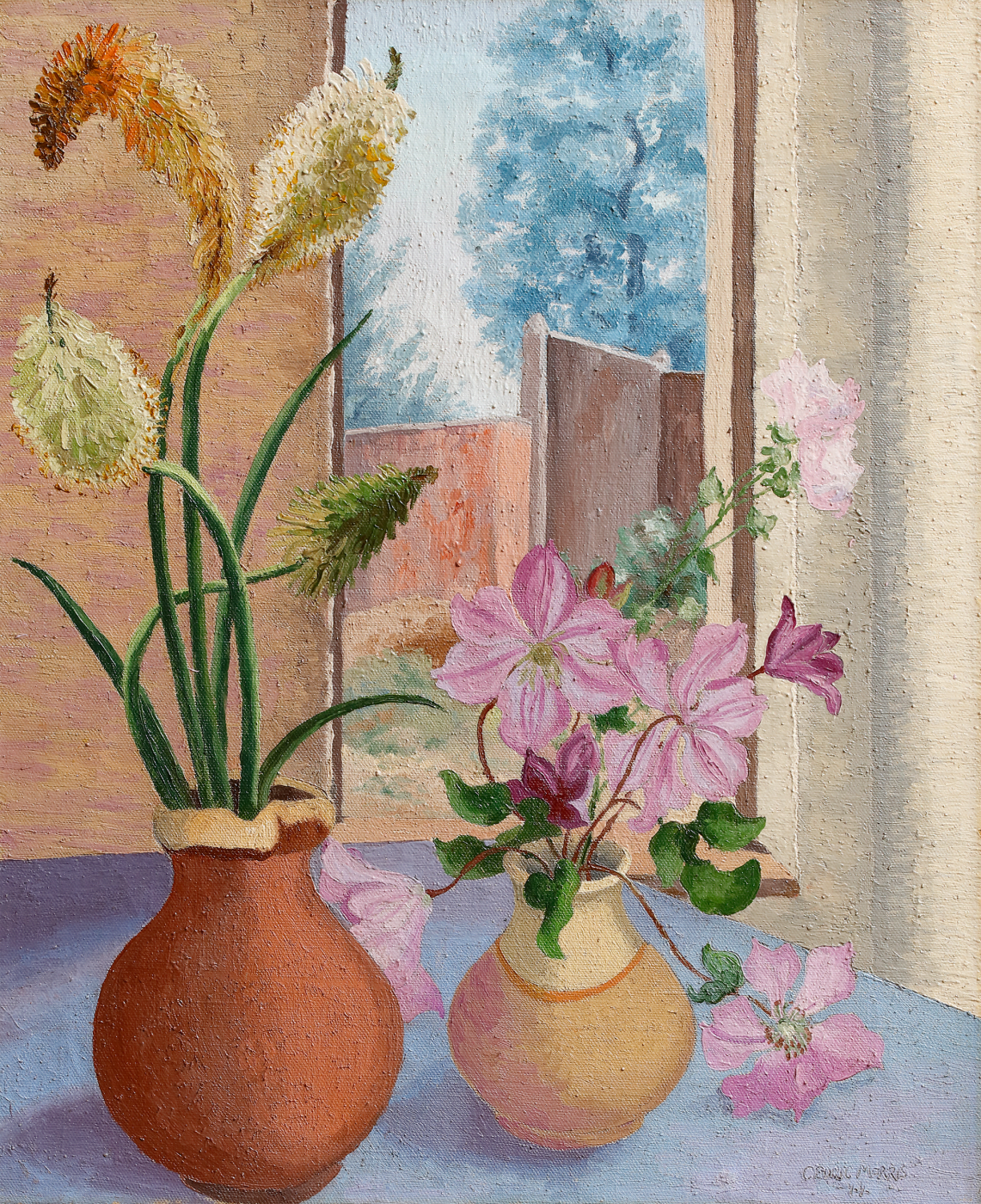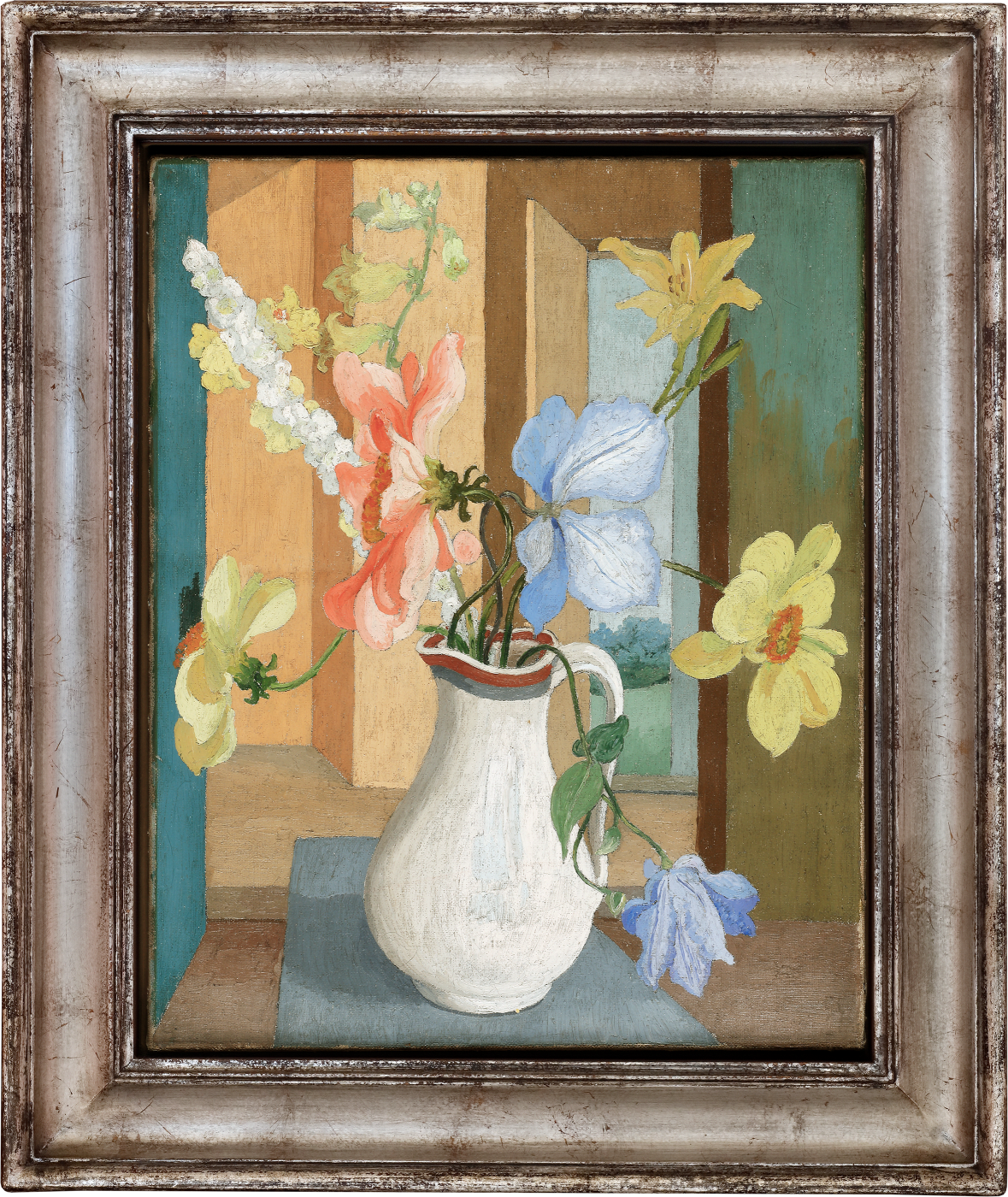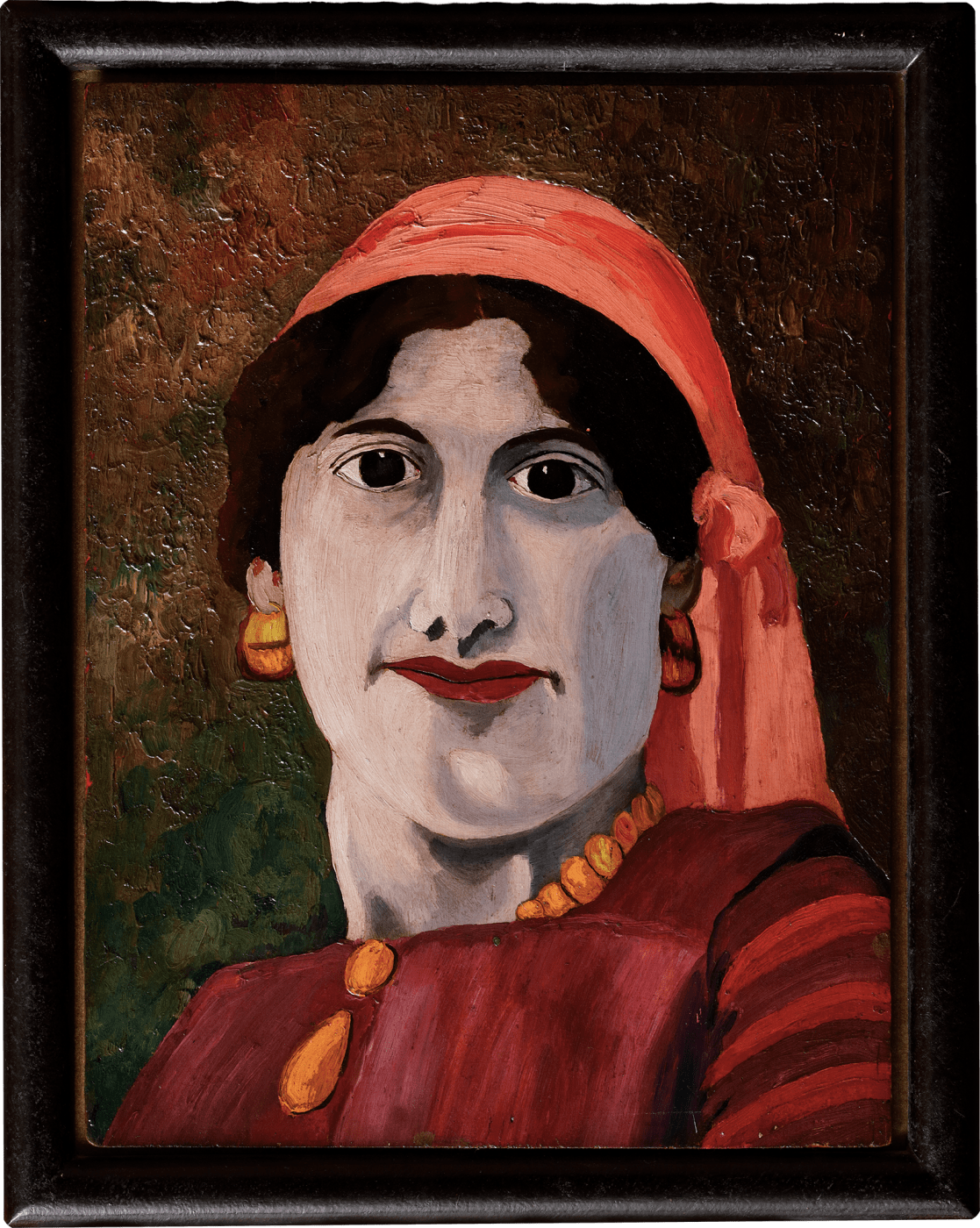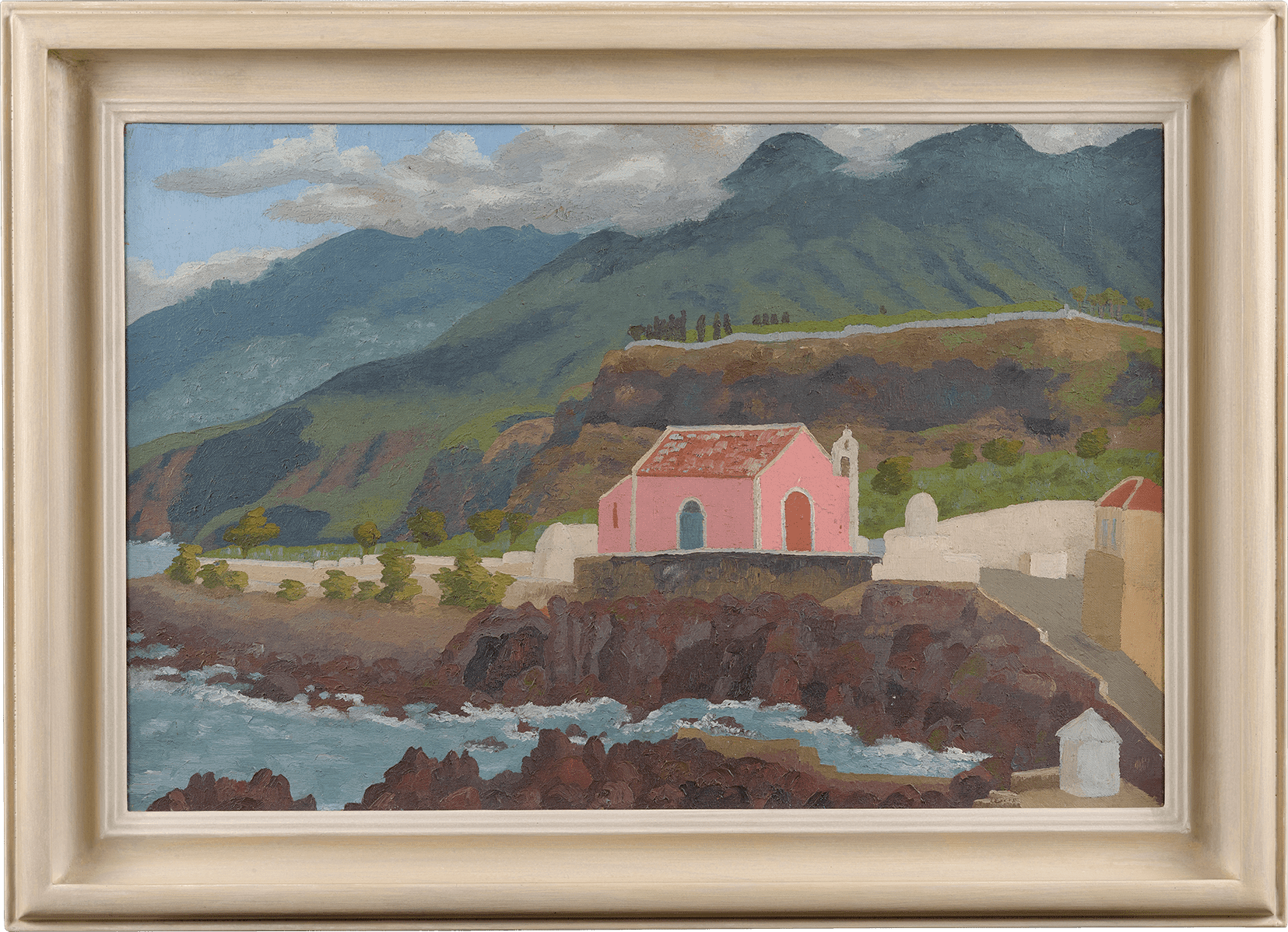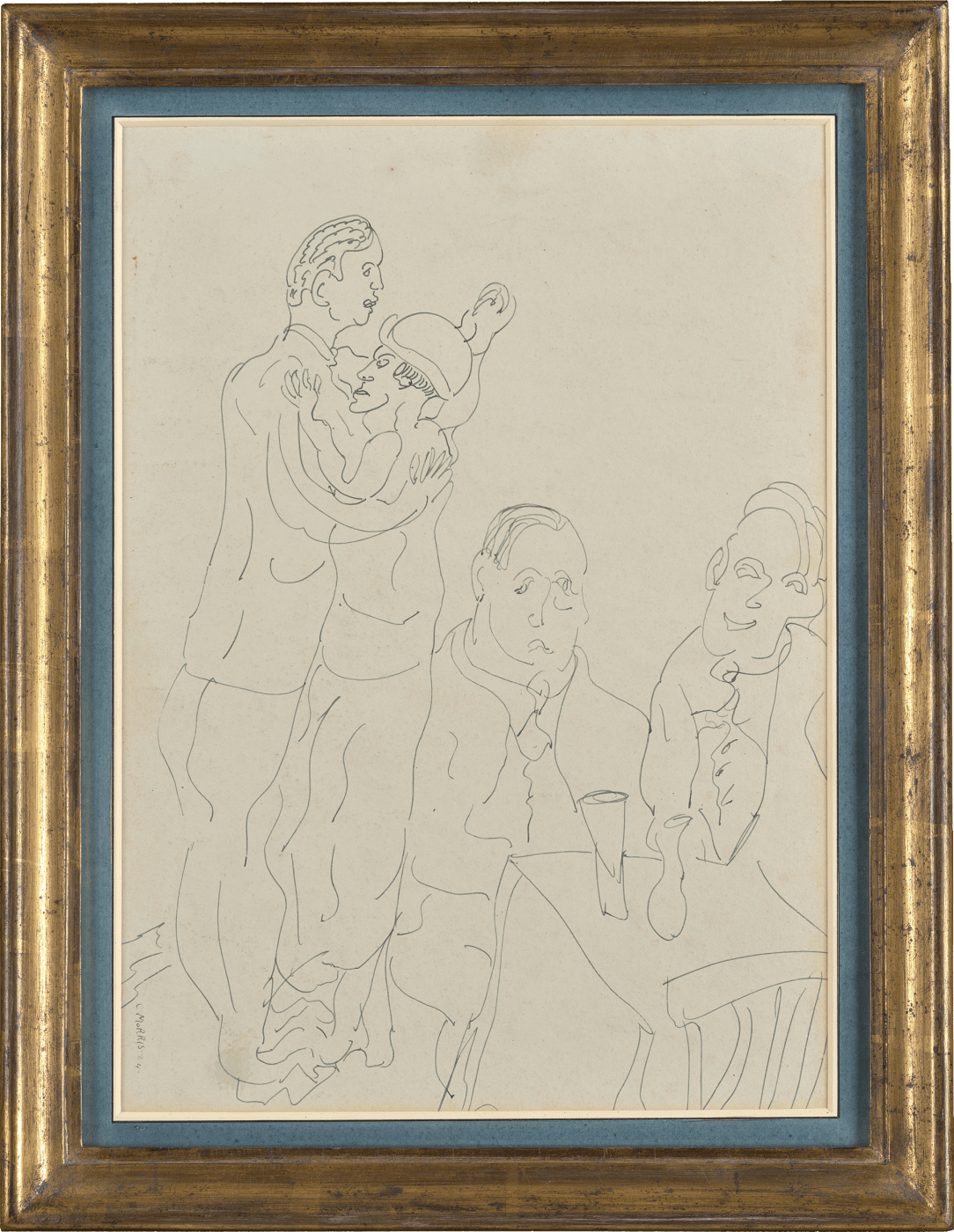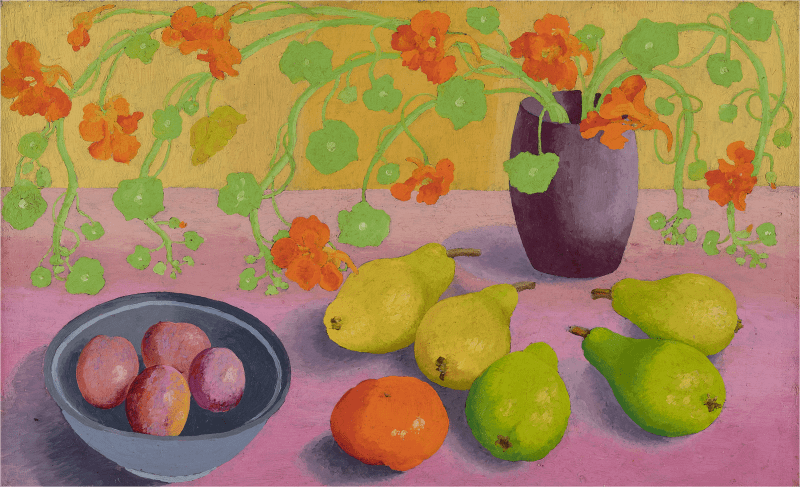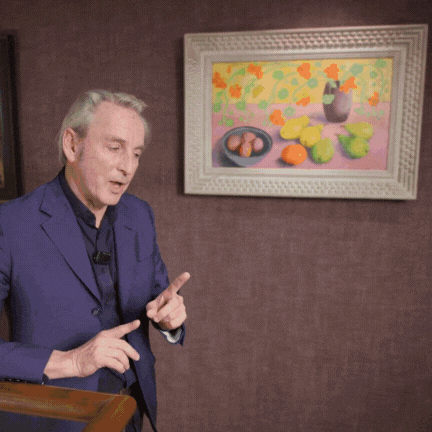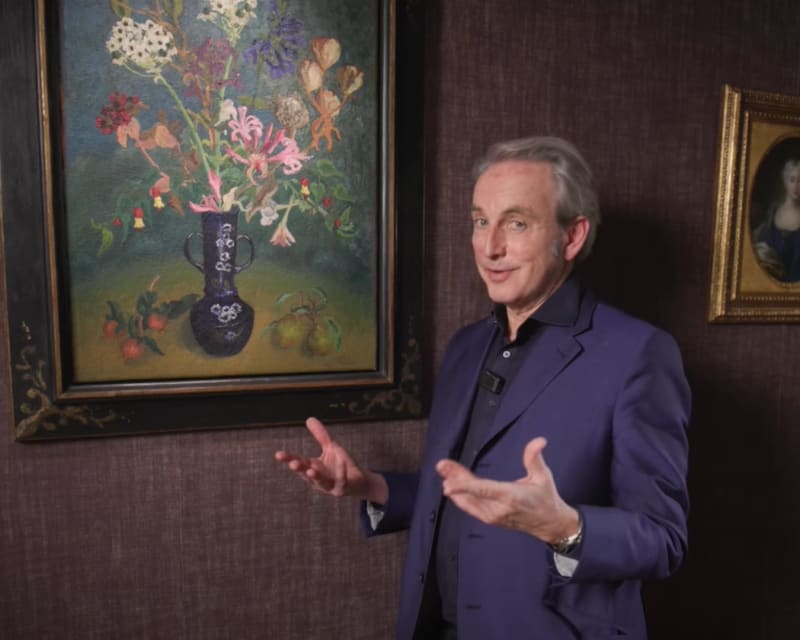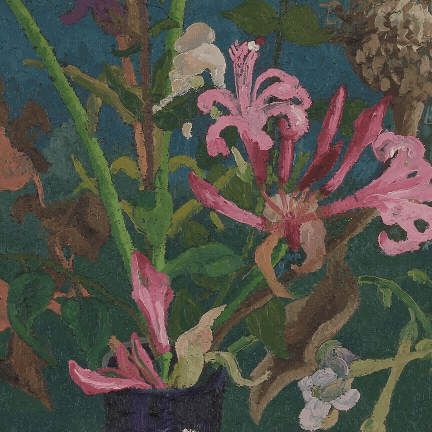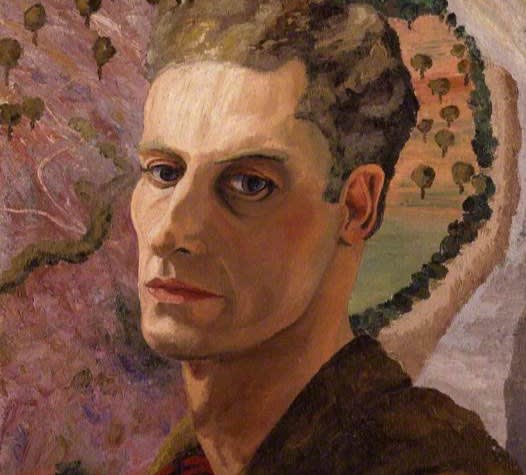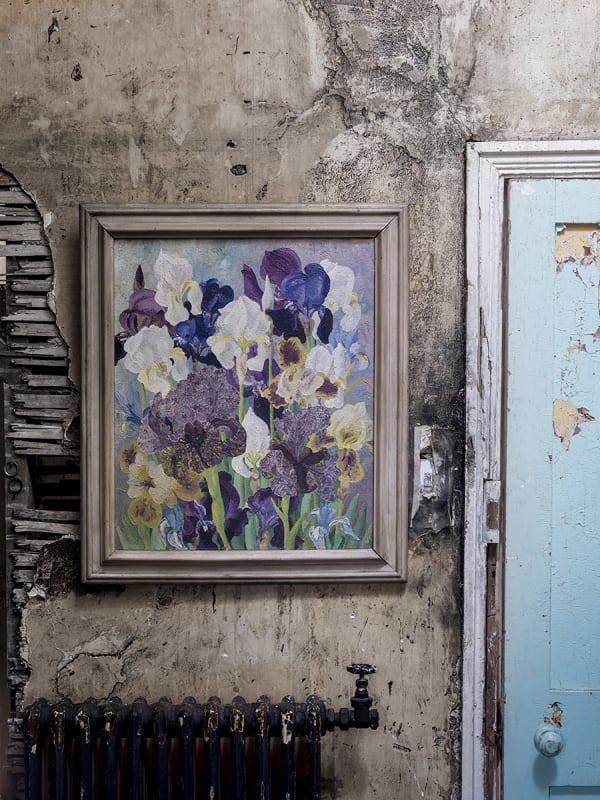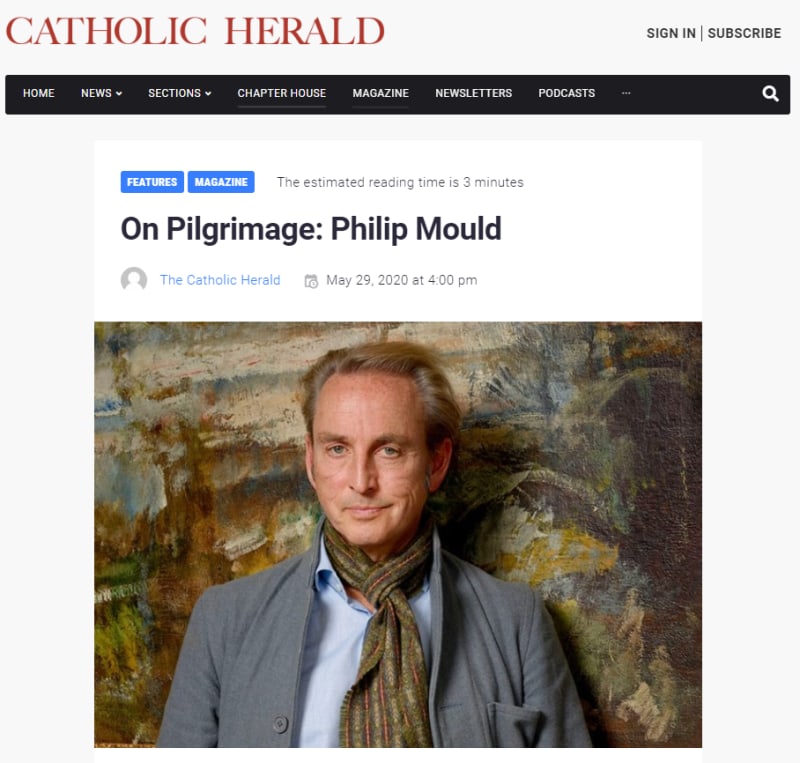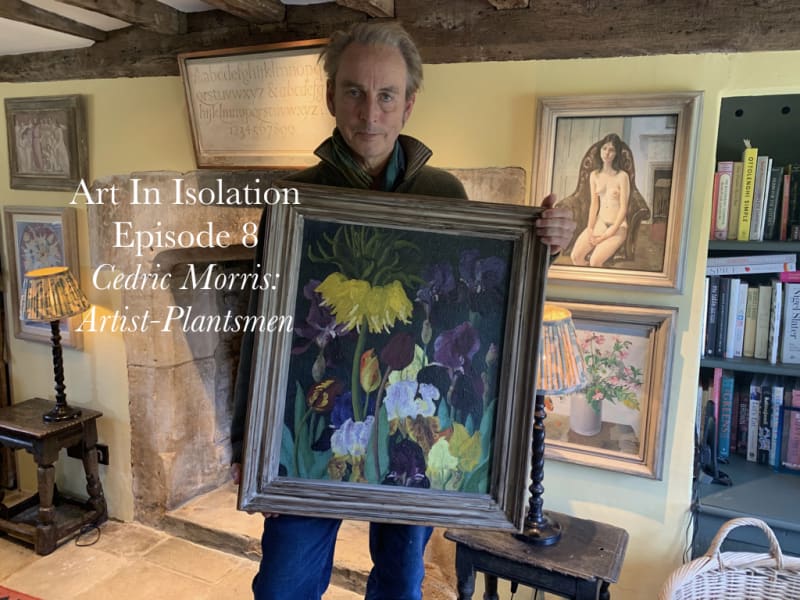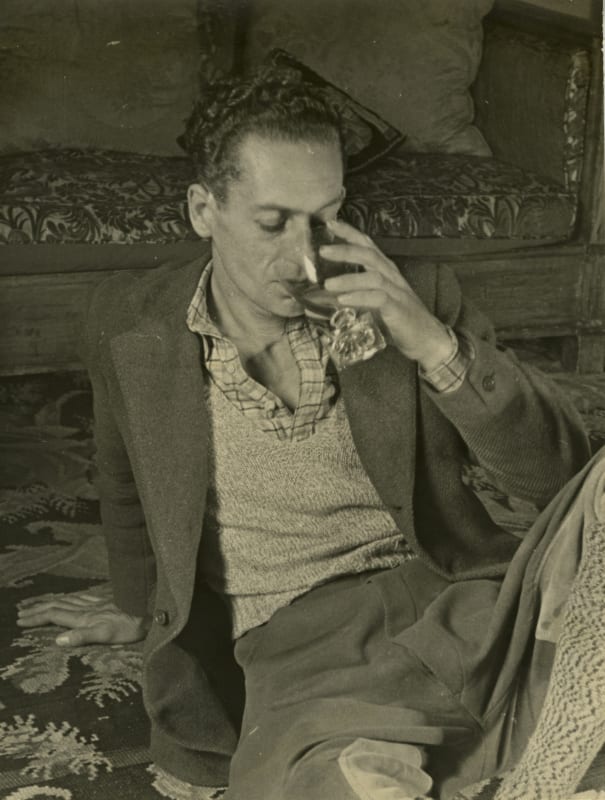
Morris was born in Swansea in 1889, and was the son of George Lockwood Morris (later eighth baronet) and Wilhelmina Elizabeth. Morris was unable to fight in the First World War due to health reasons, and following a period of two years training horses for the front line, he moved to Newlyn in Cornwall in 1917.
In 1918, Morris met his lifelong partner Arthur Lett-Haines. The two almost immediately fell in love, despite Lett-Haines's marriage to his wife, Aimée. According to curator and writer Hugh St. Clair, Morris was 'immediately taken with Lett's acerbic wit' later confessing to Lett-Haines that, before meeting him he had been asleep and now he had 'sprung to life'.[1]
In 1920, the young couple moved to Paris where they took the art scene by storm. They rented a flat in Montmartre on Rue Lepic, situated near the scandalous Chez Ma Cousine behind the Moulin Rouge, before moving to a first-floor apartment overlooking the courtyard on Rue Liancourt in Montparnasse. Here, Morris and Lett-Haines were free to immerse themselves in metropolitan life in the intimate company of vibrant, like-minded individuals. Morris became increasingly influenced by the cubists and Lett-Haines explored the art of the Surrealists. In the heart of Montparnasse, Lett-Haines and Morris mingled with artists and collectors such as Fernand Leger, Marcel Duchamp, Gertrude Stein and Peggy Guggenheim. The two quickly established themselves as the English gentlemen of the Parisian art scene and were adored by many for their English eccentricities. The two stayed in Paris until 1926/27 before moving back to London.
In 1929/1930 they moved to Pound Farm in Higham, Suffolk and it remained their home until 1939. Throughout their time in Paris and Pound Farm, Cedric and Lett-Haines worked tirelessly to promote and sell his work by exhibiting with various art associations and dealerships around Europe. Their efforts paid off; between 1920 and 1930 Cedric exhibited his work in twenty-two group shows and had two one-man exhibitions. By 1930, according to one commentator, Cedric had 'become "the rage"'. With this success, however, came increased attention from the media and other art dealers who wanted to handle his work. Cedric was not normally one to shy away from public attention, however, the endless self-promotion that was required of him was beginning to take its toll. In an article published by The Daily Express in 1928, one journalist described how Cedric '…will discuss horses and dogs more readily than he will talk about his art.[2]
During the mid-1930s Morris rarely travelled abroad and any time outside of the studio was spent in his native Wales, painting landscape views and townscapes. During the Great Depression in the 1930s, industry in Britain fell by a third. South Wales was particularly hard hit, suffering factory closures and food shortages. With national morale at an all-time low, Morris, along with others, organised a touring exhibition of contemporary Welsh art, held at the National Library of Wales, Aberystwyth 1935. From then on, Morris played an active role in the encouragement of the Welsh art in London.
Morris was born in Swansea in 1889, and was the son of George Lockwood Morris (later eighth baronet) and Wilhelmina Elizabeth. Morris was unable to fight in the First World War due to health reasons, and following a period of two years training horses for the front line, he moved to Newlyn in Cornwall in 1917.
In 1918, Morris met his lifelong partner Arthur Lett-Haines. The two almost immediately fell in love, despite Lett-Haines's marriage to his wife, Aimée. According to curator and writer Hugh St. Clair, Morris was 'immediately taken with Lett's acerbic wit' later confessing to Lett-Haines that, before meeting him he had been asleep and now he had 'sprung to life'.[1]
In 1920, the young couple moved to Paris where they took the art scene by storm. They rented a flat in Montmartre on Rue Lepic, situated near the scandalous Chez Ma Cousine behind the Moulin Rouge, before moving to a first-floor apartment overlooking the courtyard on Rue Liancourt in Montparnasse. Here, Morris and Lett-Haines were free to immerse themselves in metropolitan life in the intimate company of vibrant, like-minded individuals. Morris became increasingly influenced by the cubists and Lett-Haines explored the art of the Surrealists. In the heart of Montparnasse, Lett-Haines and Morris mingled with artists and collectors such as Fernand Leger, Marcel Duchamp, Gertrude Stein and Peggy Guggenheim. The two quickly established themselves as the English gentlemen of the Parisian art scene and were adored by many for their English eccentricities. The two stayed in Paris until 1926/27 before moving back to London.
In 1929/1930 they moved to Pound Farm in Higham, Suffolk and it remained their home until 1939. Throughout their time in Paris and Pound Farm, Cedric and Lett-Haines worked tirelessly to promote and sell his work by exhibiting with various art associations and dealerships around Europe. Their efforts paid off; between 1920 and 1930 Cedric exhibited his work in twenty-two group shows and had two one-man exhibitions. By 1930, according to one commentator, Cedric had 'become "the rage"'. With this success, however, came increased attention from the media and other art dealers who wanted to handle his work. Cedric was not normally one to shy away from public attention, however, the endless self-promotion that was required of him was beginning to take its toll. In an article published by The Daily Express in 1928, one journalist described how Cedric '…will discuss horses and dogs more readily than he will talk about his art.[2]
During the mid-1930s Morris rarely travelled abroad and any time outside of the studio was spent in his native Wales, painting landscape views and townscapes. During the Great Depression in the 1930s, industry in Britain fell by a third. South Wales was particularly hard hit, suffering factory closures and food shortages. With national morale at an all-time low, Morris, along with others, organised a touring exhibition of contemporary Welsh art, held at the National Library of Wales, Aberystwyth 1935. From then on, Morris played an active role in the encouragement of the Welsh art in London.
In 1939 Morris Lett-Haines moved the East Anglian School of Painting and Drawing from Dedham, Essex to the charming, if also moderately dilapidating, Tudor cottage called Benton End. The pair were to remain there until their respective deaths, Lett-Haines in 1978 and Morris four years later. Although somewhat reserved in title alone, the teaching methods of the school were organised according to the personalised aesthetic of the individual practitioner. In this respect, tutelage under Lett-Haines and Morris was a far cry from the academic methodology favoured by the London art schools of the time. Instruction rarely came in the form of prescriptive technical practices as both artists were ardent supporters of personal artistic development removed from any restrictive standards. Students at the school included Lucian Freud and Maggi Hambling.
Naturally inquisitive and exploratory in nature, Morris obtained an extensive knowledge of propagation through his gardening activities subsequently becoming famous for breeding legions of exotic varieties of Irises (a flower not commonly planted in England at the time). His garden at Benton End was arranged in a formal, yet aesthetically intuitive manner. Rows of flowers and plants were arranged in tiers within an old orchard and were enclosed by an encircling and modestly sized brick wall. It was Morris' intuition for colour and formal harmony that ultimately informed his painting of flowers. His garden, much like his painting was primarily motivated by a desire to capture the beauty inherent in naturally contrasting forms and tones.
During the Second World War, Benton End was open all year round and Morris did little travelling besides occasional trips to Cornwall and Wales. Instead, Morris's immediate attentions were focused on the garden, which took on a more utilitarian role during wartime, being used to grow vegetables to contribute to the war effort. Preferring to be known as an 'Artist Plantsman' Morris' still lifes of plants - vegetables, flowers, cacti and plants - are, in essence, extensions of his lifelong affinity with plants.
After the War, Morris began to travel again - first trip abroad following the War was to Morocco. For further information on Morris' travels, visit our exhibition page Cedric Morris: Beyond the Garden Wall
By the 1960s, Benton End was quieter. Although students continued to pass through its doors each year, Morris and Lett had more time to themselves. Morris would busy himself during the spring and summer months teaching the students and attending to his garden with great devotion, while Lett, who still oversaw the running of the EASPD, began to focus once again on his own art. Benton End now occupies a mythical position in the history of 20-century British art. It was more than just an art school; it was a melting pot of artistic and horticultural creativity, where people from all walks of life could meet, paint, eat and socialise.
It was in the early 1970s that Morris's eyesight began to fail. Although he continued to travel during the winter months, he gave up painting in 1975. On 25 February 1978, Lett died. Over the next four years, Millie Hayes, who moved to the house in 1966, undertook the management of Benton End. On 8 February 1982, plantsman, painter and traveller Cedric Morris died at the age of 92.
Discover notable sales from Cedric Morris in the Philip Mould Picture Archive and still life and landscape works for sale scrolling above.
[1] Morris, C. Tate Gallery Archive 83171/4/27. Quoted in St. Clair, H. (2019) A Lesson in Art & Life: The Colourful World of Cedric Morris & Arthur Lett-Haines. London: Pimpernel Press LTD, p. 24.
